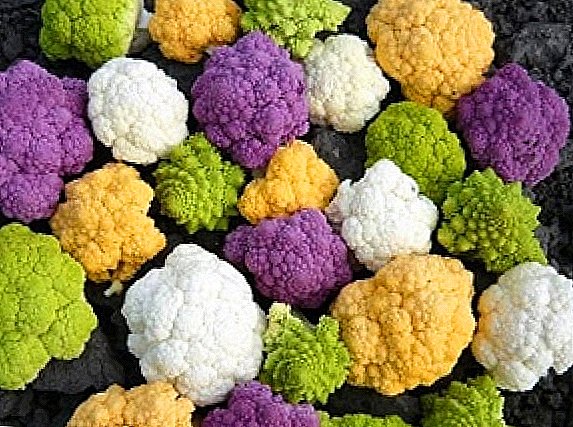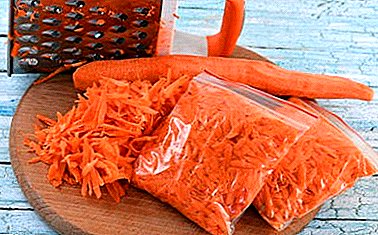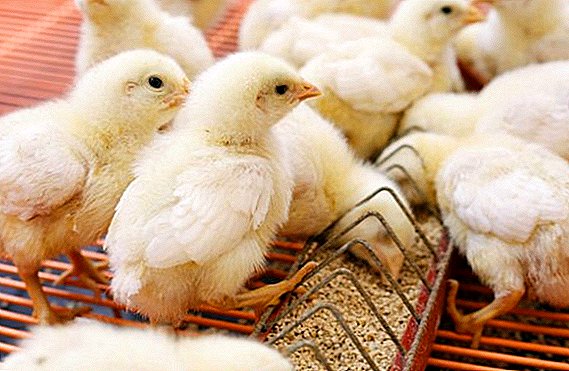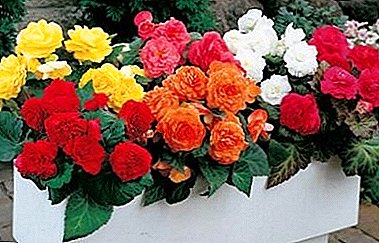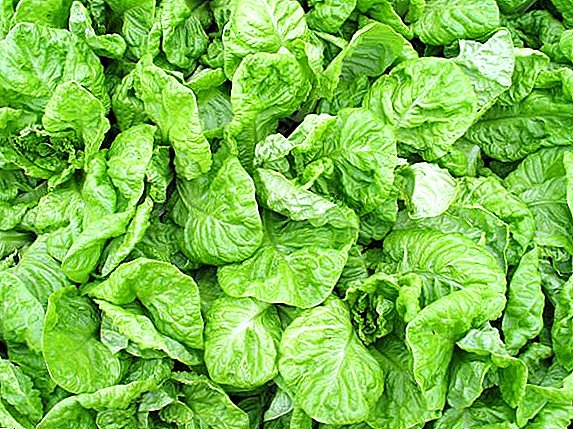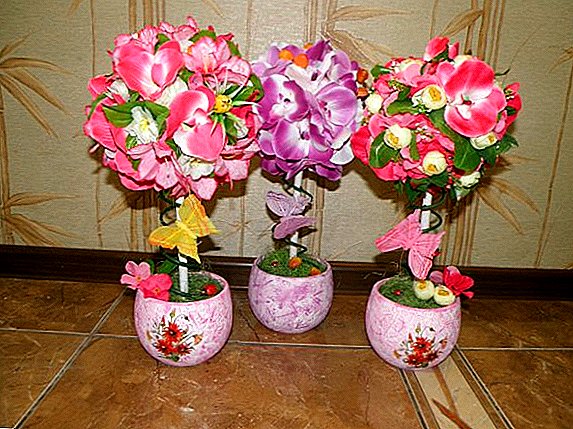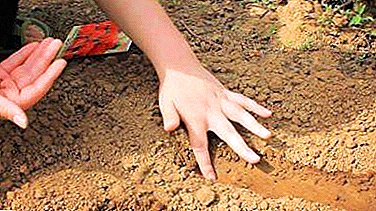
The homeland of this beautiful plant with delicate, large leaves of extraordinarily beautiful coloring are the tropics of Southeast Asia.
Coleus belongs to the family of Labiaceae and in nature has more than 150 species.
Breeders did not ignore him, as a result of which many hybrid varieties appeared.
General description of the plant
Outwardly, it is very similar to nettlebut its leaves have a velvety surface and are pleasant to the touch. He deserves the love of flower growers with the bright and varied color of leaves, which form the basis of his decorative effect.
From other varieties of "Black Dragon" is distinguished by a very dark brown-purple leaf color, which gives it a certain grandeur and mystery.
The shape of the leaves also distinguishes it from fellow other varieties. They have an oval shape and large semicircular teeth at the edges. For more information about what kind of plant Coleus and what are its types, read our article.
Despite its tropical origin, it does not require the creation of greenhouse conditions and feels quite well both at home and outdoors, even at a temperature of 16 degrees.
A photo
The photo shows the Coleus plant "Black Dragon" with proper care at home:




Home care
Care for Coleus at home is simple and does not require much effort.
Actions after purchase
 Buying Coleus in the store you need to follow a few simple rules:
Buying Coleus in the store you need to follow a few simple rules:
- Do it better in early spring
- To buy a plant not with a single sprouted leaf, but with a good crown;
- Do not buy the plant in flowering condition;
- Carefully inspect it for diseases and pests.
After purchase, you can leave in the same potif it is not small to him (the roots do not stick out of the drainage hole) and if it is not an imported specimen. For them, usually used transportation soil, not suitable for further cultivation.
Lighting
Most Coleus are light-requiringbut direct sunlight can leave burns on their tender leaves. The south-western or south-eastern side of the apartment will be most suitable. In the hot midday hours it is better to apply it.
To make the crown and leaf color uniform, from time to time you need to turn the pot towards the light on different sides.
In winter, he needs a good light, otherwise it will stretch greatly, and the leaves will fade.
Temperature
During active growth the flower needs a temperature not lower than 20 degrees. He will not disappear at 12, but in winter, when he is at rest.
Watering
Coleus reacts very badly to a lack of moisture, begins to lower the leaves and may even shed them when dried. In summer, when the plant is actively growing, it must be watered as soon as the top layer of the soil dries out. In winter, watering is not more than 1-2 times a week.
Air humidity
High humidity is a prerequisite for good plant development. It requires frequent spraying - up to 2 times a day in summer. You can put a pot with him in a tray with wet pebbles or put a container with her next to the flower.
The soil
Coleus will suit any fertile soil, so long as it is well drained and loose. Usually use a mixture of sheet, turf and peat land with sand.
Top dressing
 To maintain the beauty and decorativeness of the leaves, the flower should be fed, especially in spring and summer.
To maintain the beauty and decorativeness of the leaves, the flower should be fed, especially in spring and summer.
Mineral fertilizers with potassium content combine well with organic matter.
Nitrogen is an essential element of fertilizing, as it is responsible for the brightness of the leaf color.
Coleus should be fed once a week, when it grows, and once a month in the fall and in winter.
Important! In winter, the concentration of fertilizer should be half.
Landing at home and in the garden
Planting can be done as seeds and cuttings. It is produced in early spring. Seeds germinate quickly, and after a few months the plant pleases with its luxurious leaves.
Because of its thermophilicity, Coleus does not tolerate too low temperatures, therefore, it is necessary to plant it in the garden only after hardening and into the already heated earth. The landing site should be windless and slightly protected from the direct sun with an open shadow.
Transfer
If Coleus is grown as a perennial plant, then it needs a transplant 1 time in 2 years. It is done when the plant becomes crowded. You need to take a larger pot, prepare a fresh substrate and simply transfer the plant to it.
Pruning
Flowering greatly weakens the plant. Peduncles should be trimmed as soon as they appear. Also removed long shoots. In order to plant a good bush, they pinch the tops. Spring cardinal pruning of the flower is also important.
Growing from seed
 Coleus perfectly propagated by seeds.
Coleus perfectly propagated by seeds.
Small seeds are sprinkled on the soil layer and sprinkled with sand on top.
The soil should be wet.
The first shoots appear after 15-20 days and they are seated in a container at a distance of 2 cm from each other.
With the appearance of 1-2 pairs of leaves, the sprouts swoop in small pots 7 cm in diameter.
A month later, they are transferred to larger pots (9-11 cm).
Further care for them, as for an adult plant.
Important! The decorative effect of new plants appears 5-6 months after planting the seeds.
Breeding
In addition to seeds, coleus propagated by cuttings. They can be taken when pruning a plant in late February. Cuttings with the lower leaves removed are immersed in water. When the roots appear, they are planted in a ready-made substrate in small pots. Temperature range - about 18 degrees. For this indoor flower is characterized by rapid growth, so after 2-3 months grows a good crown with large leaves.
Benefit
Coleus has healing properties and may well be considered a medicinal plant. In this capacity, its roots are used. The substance contained in it forskolin promotes the absorption of vitamins, improves metabolism and has a tonic effect.
The root of the plant is thoroughly washed, dried and crushed. Stored in a glass jar and consumed with food as needed.
Diseases and pests
Like any houseplant, coleus is susceptible to diseases and can be damaged by pests.
 In some cases, Coleus can hurt:
In some cases, Coleus can hurt:
- Very dry air. Sign - brown spots on the leaves. It is necessary to increase the humidity of the air;
- Lack of power. Symptom - pale color and subsidence of the lower leaves. It is necessary to feed the plant with organic fertilizer;
- Excessive watering or insufficient drainage. Symptom - softening of the stem and leaves as a result;
- Rotting roots. Need either a cardinal pruning or growing a new plant from the cutting.
Pests dangerous to coleus - It is aphid, spider mite and mealybug. You can get rid of them by using a soap solution (wipe the leaves with a damp sponge to remove insects) and insecticides.
The undoubted advantages in the form of simple care and beauty of the leaves of the Black Dragon coleus make it very attractive for novice gardeners.


